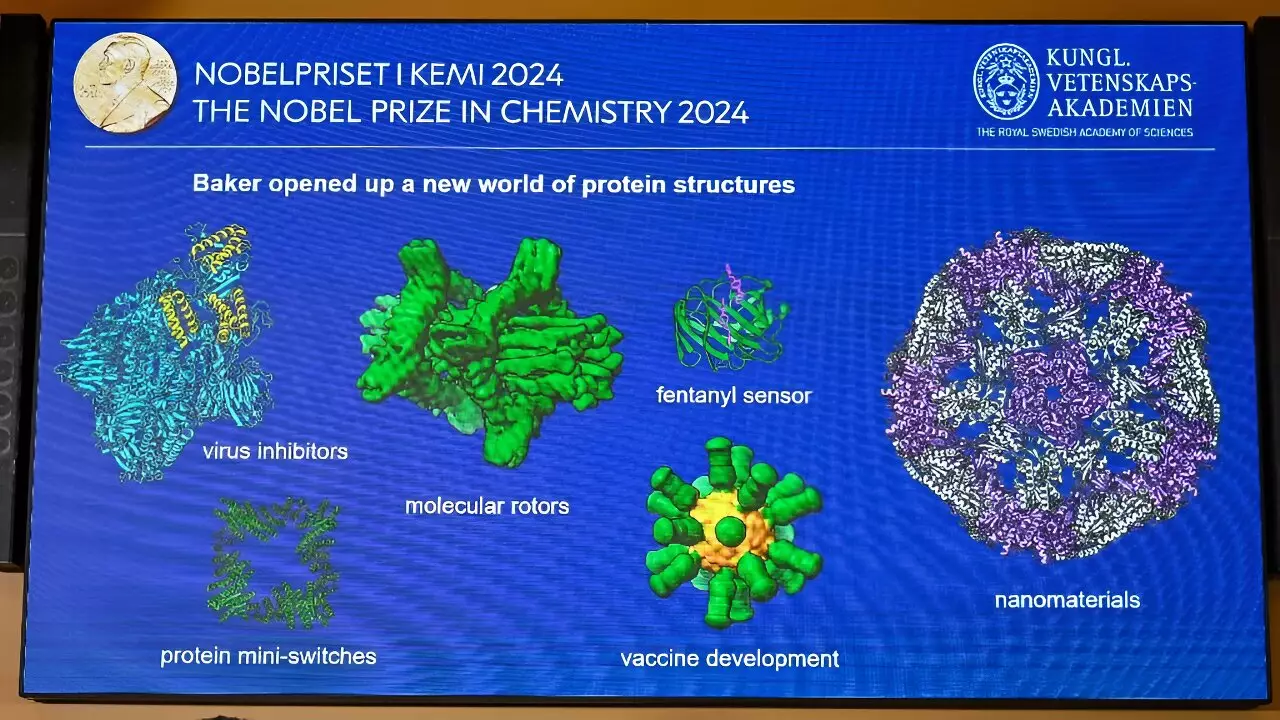The 2023 Nobel Prize in Chemistry has been awarded to three remarkable scientists who have significantly contributed to our understanding of proteins, the fundamental molecules essential for life. Demis Hassabis and John Jumper from Google’s DeepMind leveraged the potential of artificial intelligence (AI) to predict protein structures, while biochemist David Baker innovatively designed proteins that do not occur in nature. These groundbreaking discoveries promise to usher in a new era in biomedical research, with far-reaching implications, from drug development to environmental science.
Proteins play a vital role in the functioning of living organisms; they are often referred to as the “factories” that perform various tasks within our cells and tissues. As emphasized by Davide Calebiro, a researcher from the University of Birmingham, proteins are integral to a myriad of cellular processes, crafting specialized cells such as muscle or brain tissue from the genetic blueprints encoded in our DNA.
At the core of this Nobel-winning work lies the complexity of protein structures. Proteins are constructed from 20 different amino acids, and the specific sequence of these acids dictates how a protein will fold into its three-dimensional form. Mary Carroll, president of the American Chemical Society, likens this to a telephone cord, which when stretched, represents a linear one-dimensional structure. However, just as the cord returns to its original 3D shape when released, proteins fold into specific forms that are crucial for their function.
Despite the fact that nature has provided a plethora of protein structures, discovering ways to design proteins with novel functionalities remains a formidable challenge. As French biochemist Sophie Sacquin-Mora pointed out, the existing repertoire of proteins is sometimes insufficient for new applications in technology and medicine. This gap presented an opportunity for innovative strategies in protein engineering.
Historically, the quest to predict protein structures based on their amino acid sequences has consumed the scientific community for decades, illustrated by the infamous “Protein Olympics,” a biannual competition that highlighted the difficulty of accurate predictions. However, the paradigm shifted dramatically with the advent of AI. Hassabis and Jumper’s creation, AlphaFold, epitomizes this transformation. Training on vast datasets of known sequences and their corresponding structures, AlphaFold adeptly predicts the three-dimensional form of unknown sequences, revolutionizing the field by achieving results that were previously deemed unattainable.
After AlphaFold2’s resounding success in the 2020 Protein Olympics, the results were celebrated as a breakthrough in the field. It is now capable of predicting the structure of nearly all known proteins, estimated at around 200 million. This development not only vindicates prior research but has provided researchers with an invaluable tool for understanding protein behavior and functionality.
While Hassabis and Jumper focused on predicting existing structures, David Baker took a pioneering approach by designing proteins that have never existed before. Using his software, Rosetta, he meticulously explored the known protein landscape to create new sequences, demonstrating that proteins could be designed from scratch. This method opens a door to untold possibilities in biotechnology, such as the creation of specialized proteins for targeted therapies or environmental applications.
Baker’s innovative designs hold particular promise in the realm of medicine. His work during the COVID-19 pandemic, focused on creating a protein-based nasal spray that could protect against various viruses, illustrates the potential for bespoke protein solutions in addressing global health issues. His enthusiasm for transformative applications was palpable during the Nobel ceremony as he envisioned a future where such proteins could effectively combat emerging viral threats.
The implications of these achievements in protein science are profound. As highlighted on the Nobel website, a deeper understanding of proteins is critical in addressing pressing challenges such as disease mechanisms, antibiotic resistance, and even the biodegradation of plastics. Crafting new proteins could lead to breakthroughs in creating environmentally friendly materials, innovative drug delivery systems, and tailored vaccines.
Research in this field is at the precipice of a new era, promising not just to enhance our understanding of life itself but also to provide solutions to some of the most pressing challenges faced by humanity. As Calebiro succinctly put it, we stand on the threshold of transformative research that could change the course of medicine and environmental science.
The contributions of Hassabis, Jumper, and Baker have not only earned them the Nobel Prize in Chemistry but have also set the stage for a transformative future shaped by the science of proteins. This research underscores the synergistic potential of technology and biology, paving the way for innovations that will undoubtedly benefit future generations.


Leave a Reply